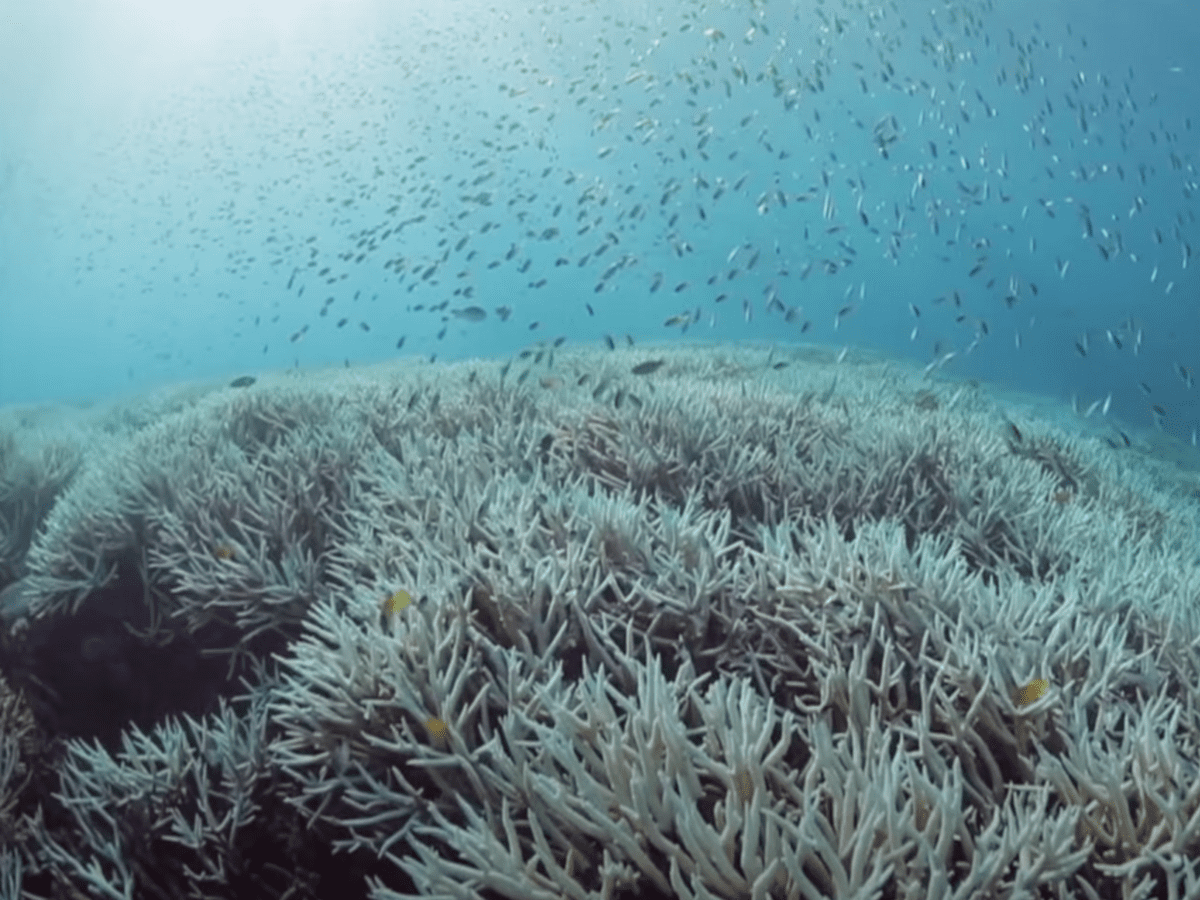The climate crisis is careering coral reefs to the brink of disaster. Alarmingly, for the second time in 10 years, the world is experiencing a major coral bleaching event. Months of climate-exacerbated record-breaking ocean heat have decimated reef systems from Australia to Florida.
Global mass bleaching of coral reefs
Coral are marine invertebrates made up of individual animals called polyps. Their primary source of food comes from algae. Specifically, these live inside their tissue in what is known as a “symbiotic relationship”. Essentially, this means that both organisms mutually benefit each other’s survival.
However, if the water is too warm, coral expel their algae and turn white. This is known as “bleaching”. Unfortunately, this leaves corals exposed to disease and increases the risk of them dying off. Just a 1°c temperature increase for as little as four weeks can trigger bleaching.
Already, as the Canary reported in March, Australia’s authorities announced that a mass bleaching was unfolding on the country’s famed Great Barrier Reef. This is the largest coral reef in the world and the only one visible from space. It is often dubbed the world’s largest living structure. At 2,300 kilometers in length, its tropical corals house a stunning array of biodiversity.
Notably, this was the biodiversity wonder’s seventh mass bleaching event since 1998. Now, the US National Oceanic and Atmospheric Administration (NOAA) is warning that this is a global-scale phenomenon.
NOAA’s heat-stress monitoring uses satellite measurements from 1985 to the present day. This bleaching event is the fourth on record, all within 30 years. Previous events took place in 1998, 2010 and 2016.
NOAA’s Derek Manzello told Agence France-Presse (AFP):
As the world’s oceans continue to warm, coral bleaching is becoming more frequent and severe
Climate crisis killing coral reefs
Countries throughout the tropics have documented mass bleaching of coral reefs since early 2023. The reports range from Florida in the United States, to the Caribbean, Brazil, and the eastern Tropical Pacific.
Florida’s 2023 heat wave was unlike any previously recorded. Notably, the NOAA said that it started earlier, lasted longer and was more severe than any other in that region.
Additionally, alongside Australia’s Great Barrier Reef, this latest mass bleaching catastrophe has hit huge parts of the South Pacific, the Red Sea and the Gulf.
Significantly, climate crisis induced prolonged warm sea temperatures likely fueled these incidents.
As Australia’s Environment Minister Tanya Plibersek recently acknowledged:
We know the biggest threat to coral reefs worldwide is climate change. The Great Barrier Reef is no exception
In a 2018 report, the United Nations (UN) Intergovernmental Panel on Climate Change (IPCC) said that global heating above 1.5°c would decimate 70-90% of coral reefs. At 2°c of heating, climate breakdown would wreck 99% of them.
Corroborating this, a separate study in 2022 found that the proportion of coral reef systems residing in locations somewhat sheltered from the impacts of marine heatwaves, drastically drops at 1.5°c. Specifically, while today 84% sit at sites that allow them to withstand these, at 1.5c, this plummets to 0.2%.
As such, World Wildlife Fund’s Pepe Clarke told AFP:
If we need a specific, visual, contemporary case of what’s at stake with every fraction of a degree warming, this is it. The scale and severity of the mass coral bleaching is clear evidence of the harm climate change is having right now
Biodiversity disaster brewing
Of course, coral bleaching has profound effects on biodiversity. These biodiversity hotspots make up just 0.2% of the ocean’s total sea floor area. Despite this, nearly a quarter of marine species call these ecosystems home.
So these mass bleaching events are jeopardising ocean biodiversity. For example, the Canary’s Tracy Keeling previously explained how coral bleaching is threatening the survival of some fish species. In particular, a study observed how bleaching had altered butterflyfish species’ behaviour in ways that put them at risk.
However, the health of the oceans is the tip of the iceberg. From the livelihoods of communities, to food security and local economies, mass bleaching puts all of these at grave risk. NOAA’s Derek Manzello said:
When these events are sufficiently severe or prolonged, they can cause coral mortality, which hurts the people who depend on the coral reefs for their livelihoods.
According to non-profit WWF, roughly 850 million people worldwide rely on coral reefs. They do so for food, livelihoods, or to protect coastlines from storms and erosion.
The NOAA has estimated that the world has already lost 30 to 50% of its coral reefs. Critically, it warned that without significant intervention, those remaining could disappear entirely by the end of the century.
Feature image via Youtube – ABC News
Additional reporting by Agence France-Presse




